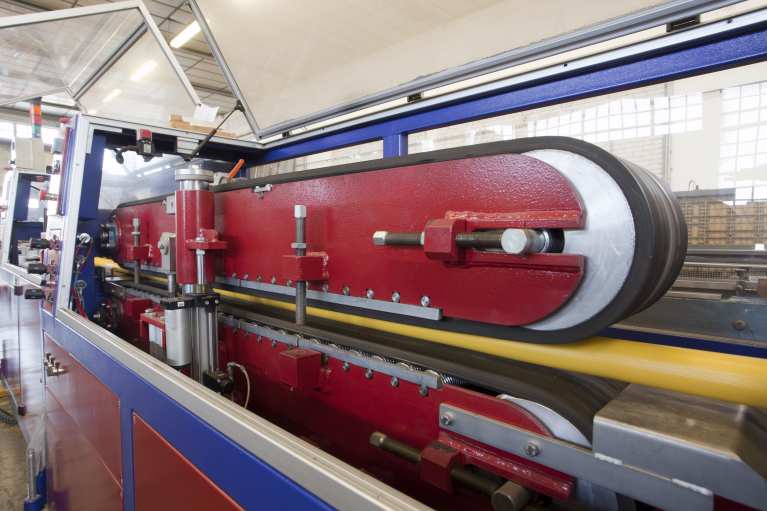
In our plastic profile manufacturing company, the extrusion process basically consists of melting the plastic material and applying pressure through a die placed at the end of the extruder, and subsequent cooling to produce semi-finished products.
Plastic Profile Extrusion: extrusion and downstream
In our plastic profile manufacturing company, we utilize various machinery generally known as extruders that are utilized in conjunction with downstream equipment composed of: a calibrating table, a haul-off, a cutting unit, and a profile dump table. For custom profile processing, the extrusion line can also be equipped with punching units, cutting and shearing machines, hot stamping, primer, embossing, marking, bi-adhesives machinery and others.
The machinery in our plastic profile manufacturing company are equipped with apposite sensors for the most important parameters of each processing line to monitor and change in a closed circuit and assure continuous quality. The plastic extrusion process is “fueled” by granules or powder through an automatic vacuum apparatus that brings the raw material in the feeding hopper. The plastic material mass is then transported from the hopper to the extrusion screw which rotates in a multi-zone heated barrel.
Here the plastic material is melted primarily by friction and secondarily by thermal conduction and homogenized through compression and shear force. The material flow is basically induced by friction in which the surfaces of the screw and barrel apply on the plastic mass. It is essential that the screw geometry be suitable for each type of plastic material for achieving optimal results.
Plastic Profile Extrusion: dies and calibrators
At this stage of plastic extrusion process, the plasticized mass flow is pushed through an apposite die designed to obtain the required profile shape. The extruded material expands and retracts inconstantly. For this reason the dies must be engineered considering different empirical corrections according to the type of raw material until the profile matches the drawing.
From the die, the thermoplastic profile passes through a calibration system having vacuum (air) and water controls that compensate material retractions, smooth the surface, and manage profile dimensions. The cooling procedure is then completed by guiding the profile into water tanks having a constant temperature, and through a forced air tunnel.
The plastic extrusion process is completed by the haul-off that pulls the profile towards subsequent processing units like punching, hot stamping, marking, bi-adhesives machinery, and final automatic cut to length requirements.
Submit your request for an extruded plastic profile
Fill out the form to request a quote or personalized consultation.
Discover how we can help bring your ideas to life.

